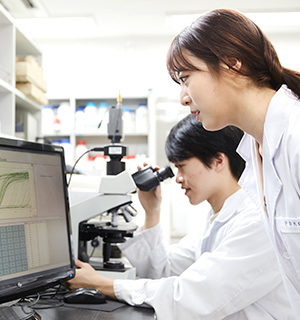
The Department of Electrobiophysics is aimed at applying biology in advanced electronic technologies and biotechnologies on the basis of physics. The curriculum consists of basic theories and concepts of mechanics, electromagnetics, quantum mechanics and biology as well as applied physics and biology fields such as semiconductor, plasma, microwave engineering, display, solar battery and biotechnology. The Department offers experiment-focused education on advanced topics such as electrons and computational physics and, the graduate students participate in labs that conduct research in semiconductor, displays (LCD, OLED, PDP), solar battery, plasma physics, bio-plasma and focused ion beam.
Educational Objectives
The aim of the Department of Electrobiophysics is to educate students in Newtonian Mechanics, Electromechanics and Quantum Mechanics which are called three classic mechanics and to strengthen students’ physical thinking. The Department offers a curriculum that cover electronic and electric engineering areas including electronic physics, semiconductor physics, electromagnetic wave and microwave physics, plasma and charged beam physics and their applications as well as display engineering areas such as circuit theory, information display, photoelectronic experiment, semiconductor processing in displays and display experiment.
Majors and Studies
The Department boasts a large number of advanced labs that conduct research in basic mechanics, optics, electronic circuit, free-electron laser (FEL), high-power microwave, focused ion beam, surface physics, electronic properties, applied physics as well as the PDP Center, LCD-BLU Lab and OLED (Organic Light Emitting Diodes) Lab which produce skilled display specialists every year, carrying out industry-government-university-collaborated projects. The Department offers an outstanding curriculum that is based on physics and offers insightful education on display, semiconductor devices and properties.